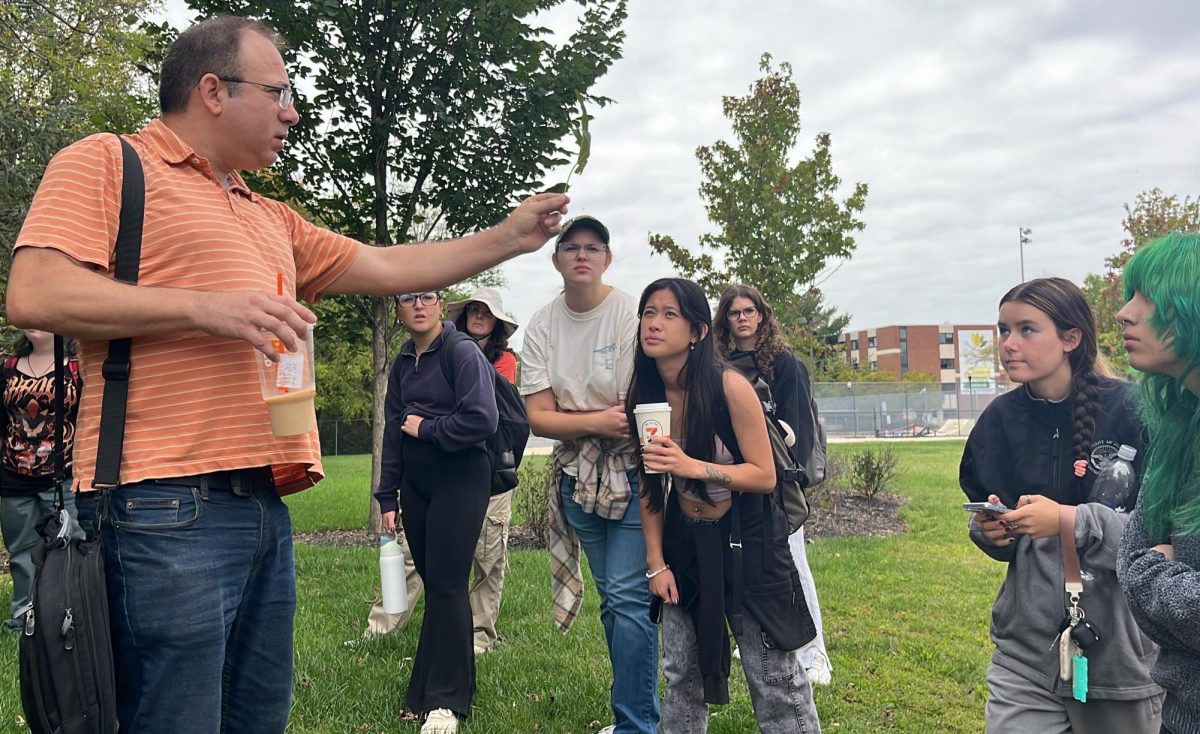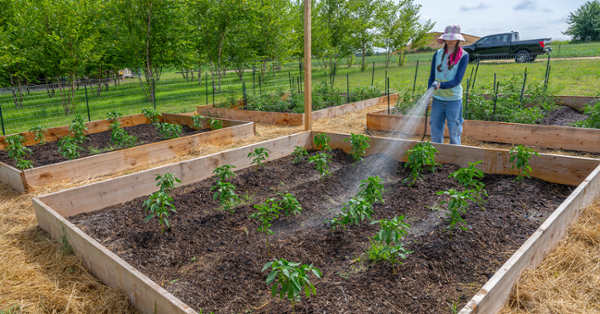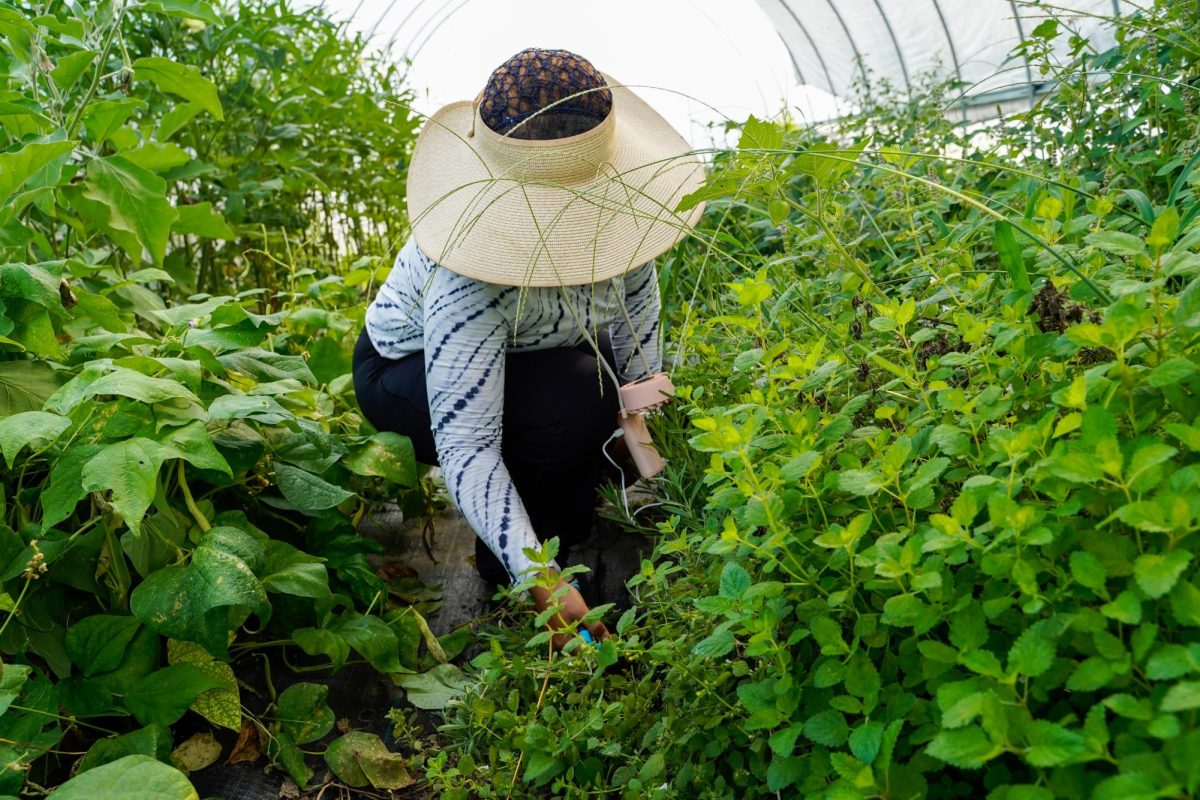On a fall morning, Dr. Daniel Duran leads his students down Rowan Boulevard in Glassboro looking for something to eat.
His Dunkin iced coffee in hand, Duran pauses and encourages students to take a leaf from a bayberry bush lining a building, crush it, and sniff.
“We got sweet and spicy, what else?” Duran asks.
Students gather around, calling out the fragrant notes they smell.
“This is like wine tasting, okay minty, we got some minty,” he notes.
Duran is an assistant professor in the environmental studies program who describes his role as half professor and half naturalist researcher.
He teaches a course called “Foraging for Edible Plants,” which he originally developed at Drexel University and brought to Rowan University seven years ago. In the class, students learn that even much of the university’s decorative foliage can be eaten or used as food or drink ingredients.
At the second stop on the walking tour, Duran points out a sweetbay magnolia, a shiny-leafed, “classic South Jersey tree.”
“Can I try it?” asks Max Mirasola, a senior environmental science major.
“Yeah, I don’t know how much you can do without drying it and turning it into a tea,” responds Duran. “But you can chew on a leaf, if you want, and tell me what it’s like. Max is gonna take one for the team.”
An “acidic cinnamon” is how Mirasola describes the taste of the leaf.
“I didn’t do it for the taste, obviously,” says Mirasola. “I just like to experience as much as I can, positive or negative, it seems important to life.”
The final project for the course entails preparing a dish using local foraged plants.
So far, Mirasola is most interested in the garlic mustard plant for his final project and says he thinks it will work well in a fajita dish.
Mirasola took this class because he found it to be the most interesting free elective. Another reason is to bond with his girlfriend, who recently became interested in gardening.
Bonding with others through foraging is second nature for Duran.
Duran currently lives in Glassboro, but is originally from Atlantic County, home to the beach plum, his favorite South Jersey forage, which is found in dunes along the shore.
As kids, he and his brother, Mike, would forage together. One of the first plants he gathered as a child was aronia berries, after learning they could be made into a jelly. He would use them to make rich, tangy Christmas gifts for his family.
“My father was all scared, because he’s like, ‘you’re poisoning yourself,’” says Duran. “I’m like, no, I’m not. I know what I’m doing.”
Duran has passed on foraging to his own 16-year-old son, who he describes as an amazing drummer and guitarist. For a short period of time in college, Duran was a music theory major, but says ultimately he “just couldn’t give up science.”
The class continues down a path to a spicebush plant, which Duran says is his favorite forgeable plant on campus. A tea can be made from the leaves, and the berries it grows are also edible.
“It’s like something in between gingerbread and root beer,” he says. “It’s really distinctively complex, like there’s so much going on in the flavor profile.”
Chad Elliot, a junior environmental science major, says he intends to use the spice bush for his upcoming assignment, possibly making vanilla ice cream, and using the spice bush as flavoring.
So far, Elliot says he is enjoying the class and hopes to gain more knowledge about plant life.
“It’s the world you live in. You should be able to derive some food from it, in case of an emergency,” says Elliot. “It’s always good to have that option, not having to rely on somebody else all the time.”
Both Elliot and Mirasola recall their introduction to Duran at Scotland Run Park in Gloucester County during a class trip for “The Environmental Experience” course.
Mirasola says Duran stopped in the middle of his lecture to pick up a beetle and hold it in the palm of his hand.
“And he goes, oh yeah, these things release acid that blisters your hand, as he’s holding it,” says Mirasola. “And we asked him how bad it is and he said ‘Oh it’ll just leave little ones, it’s fine.’ He did not care.”
In addition to running the nature center at Scotland Run Park and teaching at Rowan, Duran’s research extends to beetles. His research on a revised approach to species identification and discovery was recently published in Nature Scientific Reports and has discovered 14 new species of tiger beetles.
Students experience other edible plants on their foraging walk, including black walnuts, red chokeberries, Japanese honeysuckle, and wineberries.
With so much to offer, just throughout the flora lining Rowan’s walkways, it’s no wonder that New Jersey is considered to be so biodiverse. The North American coastal plain is the world’s 36th most biodiversity hotspot, which is a key reason to preserve plant life in the area.
Duran says he has a deep love and connection to nature, emphasizing the importance of biophilia, being out in nature as a “spiritual experience.”
This is part of why he feels so strongly about teaching his students about the natural world.
Duran describes his current students as “very engaged,” and says he doesn’t think there have ever been more questions per lecture in the history of teaching this class.
“When people are connected to nature, they are happier. They learn better. There’s actually evidence that says that kids learn better when they’re surrounded by more green,” says Duran. “This is borne out of actual research, real hard data, not just somebody’s opinion.”








